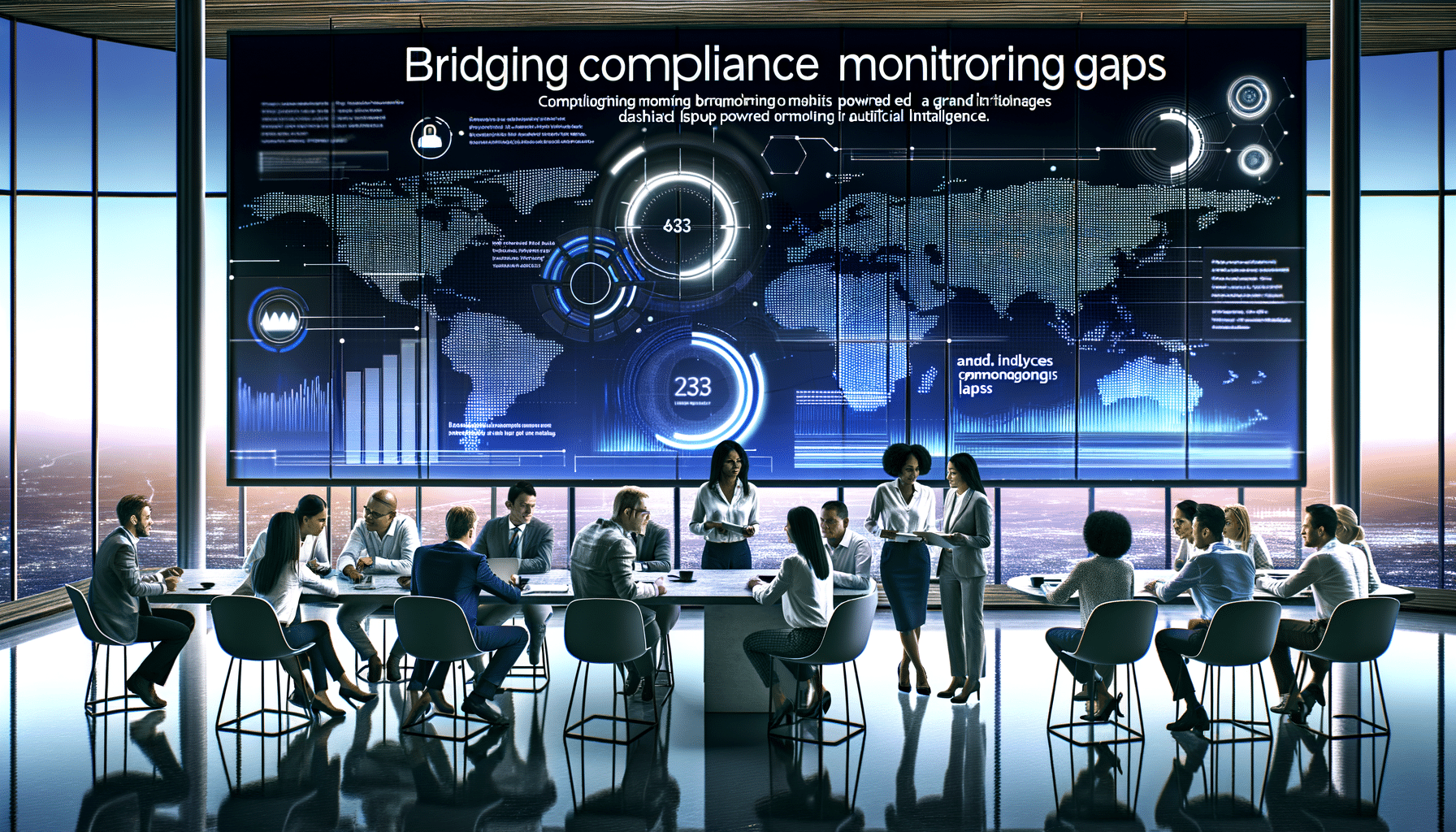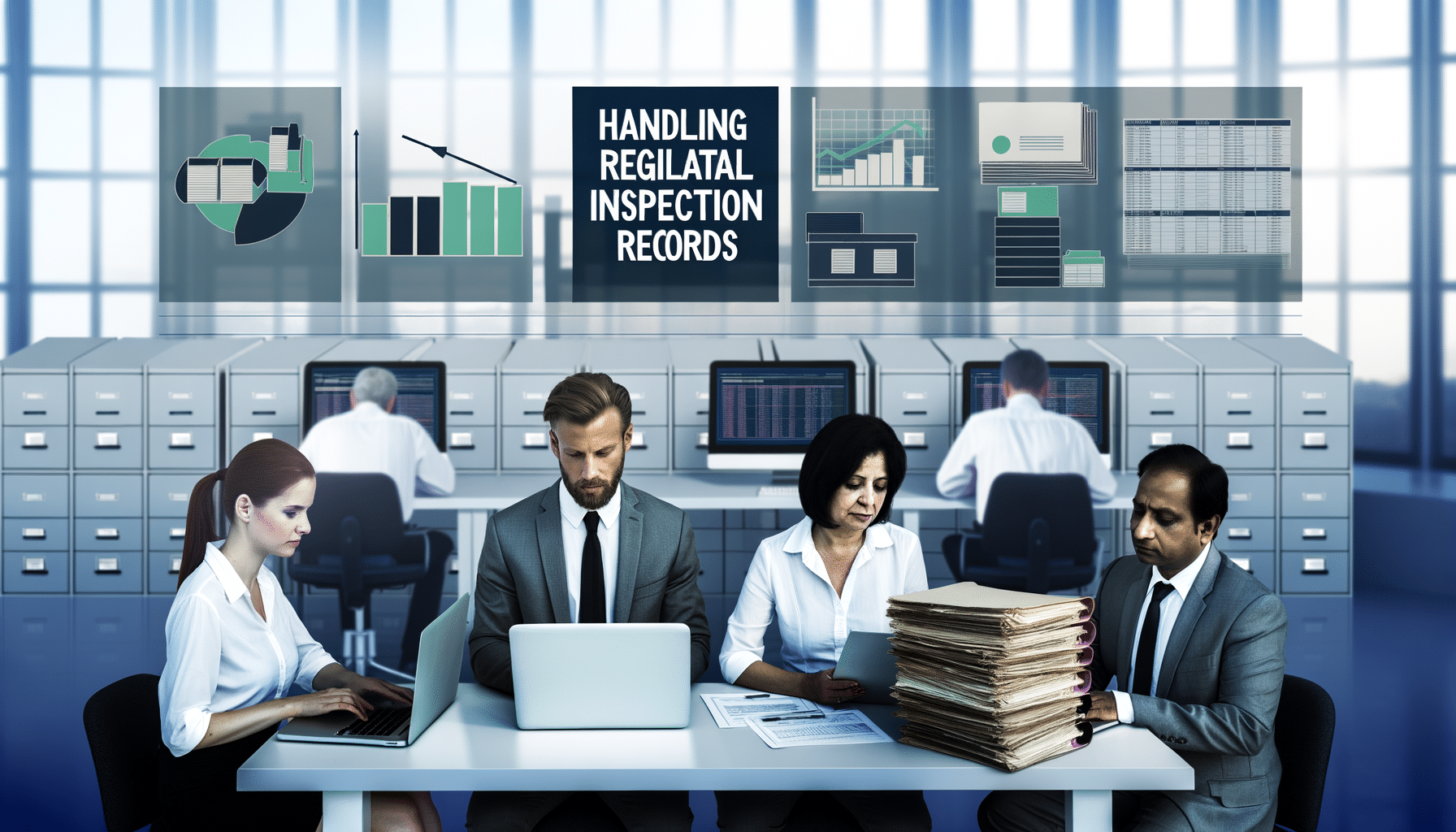- Blockchain Compliance
- November 16, 2024
Eliminating Compliance Monitoring Gaps

In the fast-paced digital era, staying on top of compliance requirements is an ongoing challenge for legal, finance, and compliance professionals. The evolving landscape of regulations necessitates a sophisticated approach to managing data and records. Unfortunately, traditional methods often fall short, leaving gaps in compliance monitoring that could expose organizations to risks. My journey with RecordsKeeper.AI has taught me that leveraging cutting-edge technology like AI and Blockchain can bridge these gaps efficiently.
The Complexity of Compliance Today
Regulatory frameworks such as GDPR, HIPAA, and SOX demand stringent data management practices. Compliance is not just about ticking boxes but entails a holistic oversight that ensures ongoing adherence to these laws. Yet, despite best efforts, monitoring gaps often arise from:
- Human Error: Manual processes are vulnerable to oversights and inconsistencies.
- Data Silos: Disconnected systems within organizations create blind spots in data visibility.
- Resource Constraints: Limited manpower and time can lead to lapses in regular audits.
It’s clear that conventional means of monitoring compliance are no longer sufficient. This is where technology comes into play.
AI: The Game Changer in Compliance Monitoring
Embracing Artificial Intelligence can transform compliance monitoring from a reactive process to a proactive strategy. Here’s how AI can help eliminate those undesirable monitoring gaps:
1. Automated Monitoring and Alerts
AI can consistently watch over data activities and transactions, detecting anomalies that may indicate non-compliance. With automated alerts, organizations can address issues as they arise, minimizing the risk of breaches.
2. Seamless Integration and Data Unification
One of the greatest challenges is synchronizing data across various platforms. AI solutions can break down silos by integrating disparate systems, providing a unified view that enhances oversight and traceability.
3. Intelligent Data Analysis
AI doesn’t just collect data—it analyses it. By sifting through vast amounts of information, AI identifies patterns and trends that could suggest compliance risks, enabling swift corrective measures.
4. Compliance Process Automation
Routine compliance tasks, from documentation to reporting, can be automated, freeing up valuable resources and ensuring accuracy. This reduces human errors significantly and ensures that workflows align with current regulatory standards.
The Power of Blockchain: Ensuring Data Integrity
While AI excels in processing and monitoring, Blockchain ensures data integrity. Integrating Blockchain with AI-based compliance solutions fortifies record-keeping processes. Here’s why:
- Immutability: Once a record is logged in the Blockchain, it cannot be altered or deleted, guaranteeing authenticity.
- Transparency: Every transaction or record update is visible in a transparent but secure ledger.
- Audit Trail: Blockchain-based records provide an indisputable audit trail, facilitating regulatory reviews.
Steps to Overcome Monitoring Gaps
Implementing a robust compliance monitoring system requires strategic planning. Here are my recommended steps to make this transition smoother:
Step 1: Assess Current Infrastructure
Evaluate your existing systems and processes to identify weaknesses and areas susceptible to monitoring lapses.
Step 2: Invest in the Right Technology
Choose AI and Blockchain solutions that align with your industry needs and compliance objectives. Consider platforms like RecordsKeeper.AI, which offer comprehensive compliance support.
Step 3: Train and Upskill Your Team
Ensure your team understands how to leverage new technologies effectively. Regular training ensures that staff is equipped to handle updated compliance protocols.
Step 4: Monitor, Review, and Adapt
Compliance isn’t static. It requires continuous monitoring, regular reviews, and the flexibility to adapt to changing regulations.
The Road Ahead
As technology continues to evolve, the role of AI and Blockchain in compliance will only grow more prominent, offering unprecedented accuracy and efficiency in compliance monitoring. Eliminating monitoring gaps not only mitigates risks but also positions businesses as trustworthy entities in the eyes of regulators and the public.
For those of us in leadership roles, leveraging these tools isn’t just about keeping up with regulations but about gaining a strategic advantage. I encourage everyone to explore the transformative potential of digital innovation in compliance.
As always, I am here to share my insights and experiences on how we at RecordsKeeper.AI are working to revolutionize record management for businesses everywhere. Let’s embrace this new era of vigilant compliance together. Feel free to reach out or follow my journey as we continue to explore the future of compliance and record management.
Toshendra Sharma is the visionary founder and CEO of RecordsKeeper.AI, spearheading the fusion of AI and blockchain to redefine enterprise record management. With a groundbreaking approach to solving complex business challenges, Toshendra combines deep expertise in blockchain and artificial intelligence with an acute understanding of enterprise compliance and security needs.
Related Posts


Handling Regulatory Inspection Records
Managing documentation for regulatory compliance.
- January 3, 2025
Archives
- January 2025
- December 2024
- November 2024
- October 2024
- September 2024
- August 2024
- July 2024
- June 2024
- May 2024
- April 2024
- March 2024
- February 2024
- January 2024
- December 2023
- November 2023
- October 2023
- September 2023
- August 2023
- July 2023
- June 2023
- May 2023
- April 2023
- March 2023
- February 2023
- January 2023
- December 2022
- November 2022
- October 2022
- September 2022
Want to get more content like this?
Signup to directly get this type of content to your inbox!!
Latest Post
Document Control for Equipment Maintenance
- January 20, 2025
Managing Records for Multiple Clients
- January 19, 2025
Handling Conference Documentation
- January 18, 2025
Setting Up Department Record Reviews
- January 17, 2025





